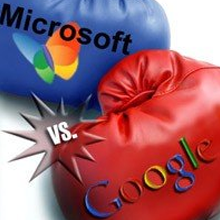Google searches for ways to keep big ideas at homeStory from the Wall Street Journal
Search giant concerned on lack of formal process for reviewing '20 percent time'.
Google Inc. is revamping how it develops and prioritizes new products, giving employees a pipeline to the company's top brass amid worries about losing its best people and promising ideas to start-ups.
The Mountain View, Calif., company famously lets its engineers spend one day a week on projects that aren't part of their jobs. But Google has lacked a formal process for senior executives to review those efforts, and some ideas have languished. Others have slipped away when employees left the company.
"We were concerned that some of the biggest ideas were getting squashed," said Google Chief Executive Eric Schmidt in an interview.
Google can no longer afford to let promising ideas fall by the wayside. The Internet search giant's once-torrid growth has slowed. At the same time, it faces fresh competition from Microsoft Corp.'s new search engine, Bing, and start-ups such as Twitter Inc., which was founded by former Google employees.
In response, Google has recently started internal "innovation reviews," formal meetings where executives present product ideas bubbling up through their divisions to Mr. Schmidt, Google founders Larry Page and Sergey Brin, and other top executives.
The meetings are designed to "force management to focus" on promising ideas at an early stage, Mr. Schmidt said.
The efforts have been behind several services that Google has recently unveiled, including software that allows companies to use Microsoft's Outlook email and calendar software while storing their data with Google. Microsoft said Wednesday the Google software interferes with an Outlook search function; Google disputed the severity of the problem, but said it is working to improve its software.
Another project, an imaging product that is based on facial-recognition software developed inside Google, is expected to be released this summer.
Google has also begun to give a few engineers broad leeway to start big projects of their choosing, Mr. Schmidt said. One result of this effort: Google Wave, a collaboration tool that the company previewed last month.
The moves are a shift for Google. Previously, its early-stage projects weren't systematically vetted by top executives. Employees with a new idea would lobby their bosses for resources and time. Once approved, a project could linger or die without getting much attention from senior management.
Google needs new products to jumpstart its growth. While it remains a juggernaut with one-third of all U.S. advertising dollars spent online, its year-over-year revenue growth has slowed from 56% in 2007 to 31% in 2008 and was just 6% in the first quarter of this year.
What's more, employees continue to leave Google as it evolves into a mature company with 20,000 workers."Most product managers evaluate [whether to stay] every six months," said Chris Vander Mey, a senior Google product manager who worked on the Microsoft Office integration.
While praising how Google has supported small projects like his own, he said he still expects to leave the company over time to explore other interests.
Google has taken cracks in the past at the retention problem. In March, it repriced millions of employee stock options whose value had been wiped out as Google's share price has fallen over the past two years. The company has also begun testing a mathematical formula to try to predict which employees are most likely to leave, based on factors like employee reviews.
David Yoffie, a Harvard Business School professor who studies technology and e-commerce companies, said prioritizing is important for Google. While Google has launched hordes of new experiments,"in the absence of focus and promotion" few have turned into blockbusters, he said.
In the case of Google Wave, the company singled out Lars Rasmussen and Jens Rasmussen to test its approach to developing ideas.
The brothers, who are based in Australia, had been working on Google Maps. On the side, they were also thinking about creating a new communication system to replace email.
Messrs. Schmidt, Page and Brin were intrigued and gave the engineers a long leash."We said go do something really interesting and take as many resources as you need," Mr. Schmidt said. They gave the Rasmussens dozens of employees, he added, substantially more people than most early-stage projects.
To allow the duo to stick to their vision for the product, the top executives kept Wave secret from the rest of the company. Wave wasn't opened up to broader employee feedback until later in the development cycle.
Lars Rasmussen said the conditions freed his team from concerns such as fighting for engineers and removed pressure to integrate with other Google products."We knew we had to do something different," he said.
While Google has high hopes for Wave, which combines communications like email and messaging through a new service that updates in real-time, some are skeptical. Search analyst Danny Sullivan said he was "underwhelmed" by Wave and sees the service as a feature rather than a whole new way to share information. The service is scheduled to be released to the public later this year.
Other current and former Google employees see Wave as an exception. Sean Knapp, a former Google engineer, left the company in 2007 and started Ooyala Inc., a start-up that distributes and manages advertising around online video.
Mr. Knapp said Google managers offered him the chance to start the project within the company, but he declined. He worried he wouldn't feel the same pressure to succeed."If you're really aggressive, you want that sink or swim environment," he said.
Mr. Schmidt said it is "a fact of life" that some Google employees will ultimately choose the risk and reward of a start-up. But he added the company tries to make it possible to be "part of a start-up within Google."
 More Time Online For Americans
More Time Online For Americans


















